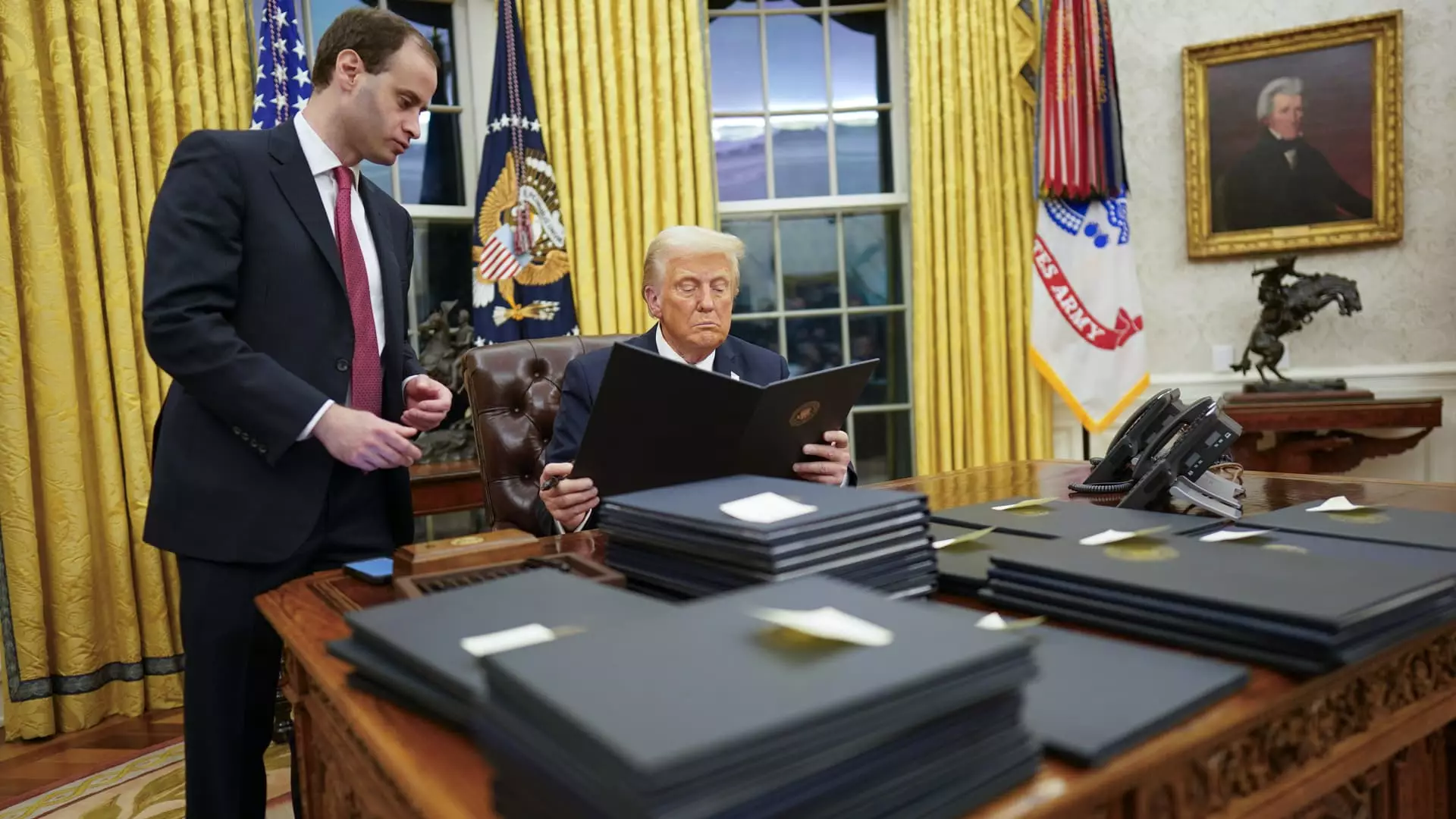The inauguration of President Donald Trump in January 2017 marked a pivotal moment for American energy policy. Within the first few hours in office, he made a definitive shift towards fossil fuel production that signaled a departure from the Obama administration’s emphasis on climate action and renewable energy sources. This article will explore Trump’s energy directives, the motivations behind them, and the potential implications for the future of the U.S. energy sector and climate policy.
Trump’s energy strategy can be summarized as a staunch endorsement of fossil fuels. His swift issuance of executive orders reflects a clear intent to expand oil and gas production while dismantling regulatory frameworks aimed at reducing carbon emissions. One of the most notable aspects of this new approach was his announcement to declare a national energy emergency. Trump characterized the U.S. energy supply as frail and unpredictable, suggesting that an increase in fossil fuel production was necessary for national security.
Despite this fervor, industry leaders have voiced skepticism regarding the efficacy of Trump’s orders in altering the actual production landscape. Executives from major energy firms like ExxonMobil and Chevron have pointed out that production levels are primarily driven by market demands, rather than presidential directives. This highlights an inherent contradiction in Trump’s approach: while political ambition is strong, the reality of global commodity markets may limit the tangible effects of his rhetoric and policy decisions.
One of Trump’s boldest actions was to initiate the process of withdrawing the United States from the Paris climate agreement. The landmark treaty aimed to unite global efforts in limiting temperature rise and curtailing greenhouse gas emissions. Trump’s decision to exit this agreement acted as a repudiation of the previous administration’s commitment to climate action. Instead, he positioned the U.S. as a proponent of energy independence grounded in fossil fuel development.
However, this move ignited considerable backlash from environmentalists and global leaders who heralded the Paris agreement as essential in combating climate change. By withdrawing from the treaty, the Trump administration assumed a more isolationist stance, effectively sidelining the U.S. from international climate negotiations. This decision is emblematic of a broader trend in his energy policy, where short-term economic benefits are prioritized over long-term sustainability.
In an effort to streamline energy production, Trump sought to roll back regulatory barriers that impede fossil fuel development. Among his actions was the revocation of a ban on oil and gas drilling in offshore waters, coupled with a pledge to expedite liquefied natural gas (LNG) projects, particularly in Alaska. By prioritizing coal and natural gas, Trump attempted to solidify the United States as a global energy leader, but these strategies raised questions about public health, environmental degradation, and climate resilience.
Moreover, while Trump aimed to elevate fossil fuels, he simultaneously attempted to undermine the credibility and financial support of alternative energy sources. The suspension of funding for clean energy initiatives under the Inflation Reduction Act, along with the halt on electric vehicle charging projects, reflects a clear bias against renewable energy investments. This could have profound implications for the U.S. market, potentially undermining innovations and advancements made in clean energy technology.
The legal landscape surrounding Trump’s energy directives remains contentious. Many of his executive orders are likely to face significant challenges in the courts. For instance, prior rulings have hindered similar attempts to overturn Obama-era protections. This ongoing legal struggle serves as a reminder of the complex interplay between policy, the legal framework, and market forces in shaping the energy landscape.
The ramifications of Trump’s energy decisions will be felt far beyond his tenure in office. By undermining climate policies and bolstering fossil fuel initiatives, the Trump administration initiated a trend that could lead to increased environmental stress and a slower transition to sustainable energy practices. As the effects of climate change become increasingly evident, the long-term consequences of prioritizing fossil fuels over renewable energy could manifest in the form of more extreme weather events and degraded ecosystems.
Trump’s aggressive stance on fossil fuels has defined a significant chapter in U.S. energy policy, one that deeply polarized public opinion and environmental discourse. While his administration’s focus on deregulation and fossil fuel investment was aimed at economic rejuvenation, it fundamentally altered the trajectory of American energy. Looking ahead, the implications of these actions serve as a crucial litmus test for the resilience of U.S. energy policy in the face of climate change, impacting everything from consumer behavior to legislative priorities moving forward. The question remains: will the United States return to a focus on sustainable energy sources, or will the fossil fuel vision continue to dominate the national dialogue?

